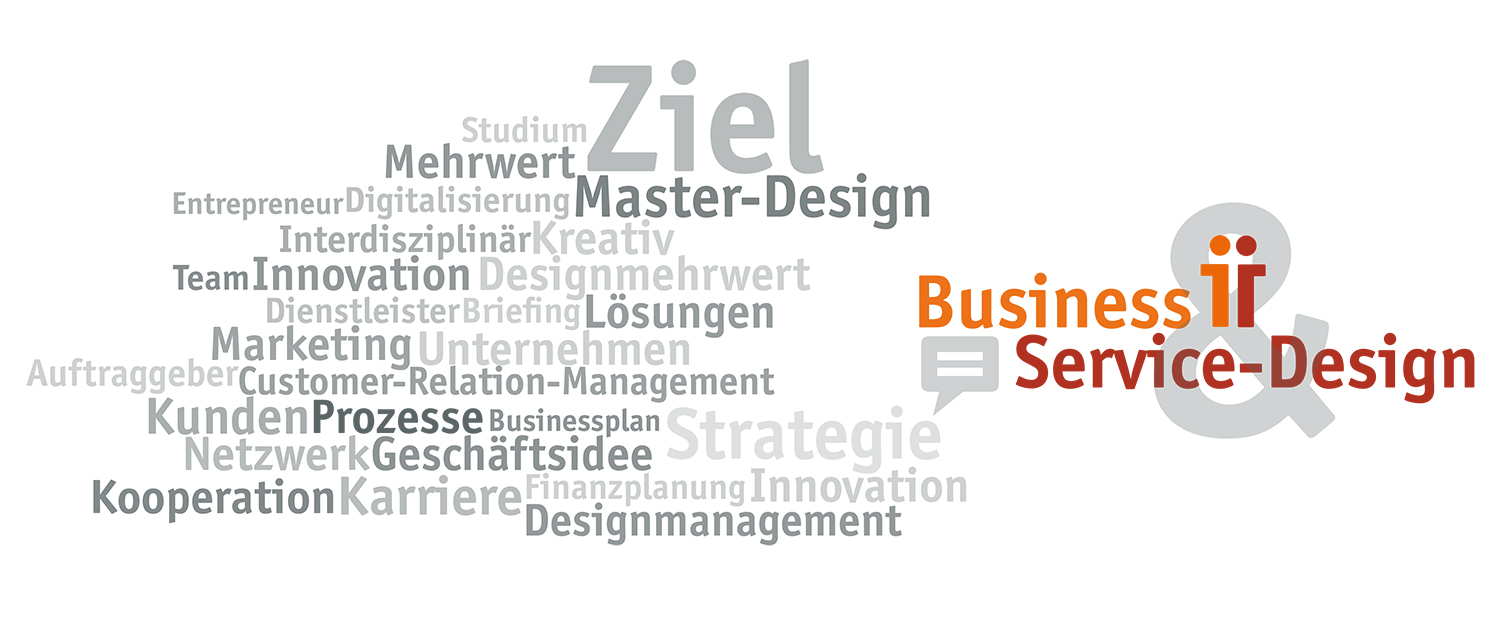Business- & Service Design
Explaination
As a designer, you develop products and processes for customers from the industry. You are, therefore, a service provider for your client. To do this, you need instruments and procedures to advise customers and convince them of your creative solution successfully. This requires advanced design competence. The design connects with the management.
The range of tasks changes when you plan your career as an entrepreneur in the design field. Here you will increasingly control and direct the processes within your company. Design management becomes an integral part of corporate governance. “Entrepreneurship” in the context of entrepreneurial thinking and acting, leads to an “added value” of design.
This Master Design focus is not exclusively aimed at designers. It is also attractive for interested parties who have a commercial Bachelor’s degree with a focus on marketing or similar.
Contents
- Instruments and procedures for an optimized “Customer relation management”.
- Practice-oriented methods for the processing of customer orders in the context of a service-providing company.
- Development of solutions to optimise the interface between client and designer/designer on both sides.
- Development of strategic fields of competence in the context of a service provider.
- From the business idea to the implementation: methods, instruments and procedures to build your own “business”.
Study goals
With the focus on business and service design, students should be able to control design processes in a goal-oriented manner.
As a “classic” service provider or in the context of self-employment, you will be able to identify requirements and potentials on the part of the client and your own company that goes beyond design.
For this purpose, you will analyse the market environment, which is changing, e.g. through innovations, globalisation and digitalisation, and recognise new customer needs. Your goal: to create new design and management solutions.
In doing so, you will use instruments that are tailored to the design process and that meet both creative and commercial requirements. Students see a heterogeneous environment as a challenge to work successfully in interdisciplinary teams.



